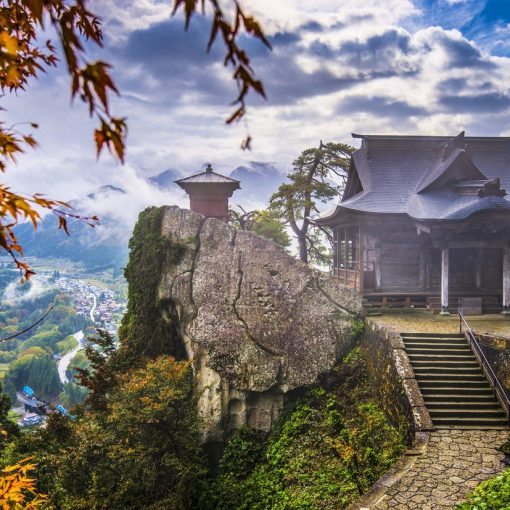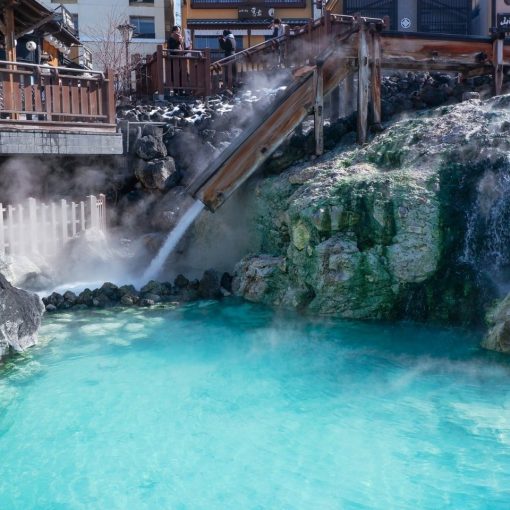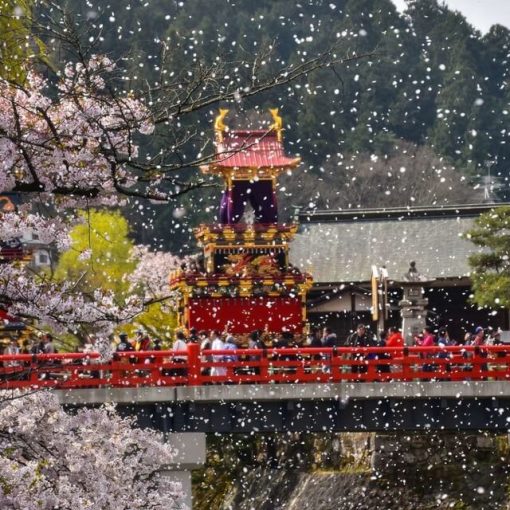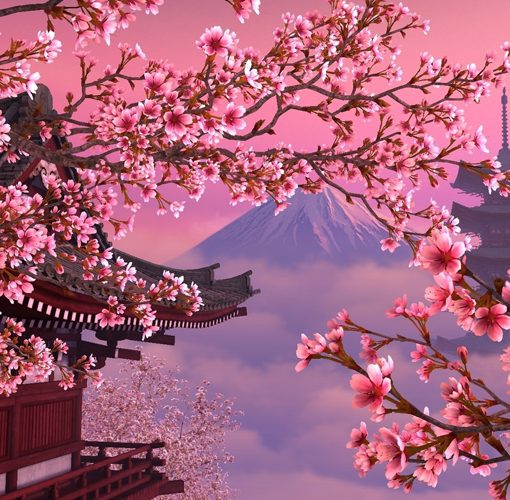Yamanashi Prefecture is located in the southeast of Honshu, bordering western Tokyo. It is surrounded by mountains and mountain ranges that have established conservation areas, including Fuji-Hakone-Izu National Park, Tanzawa Oyama Wildlife Sanctuary, Chichibu-Tama National Park, Yatsugatake Chushin Wildlife Sanctuary, and National Japan Southern Alps Park. The nature of the prefecture impresses with its diversity and beautiful views of lakes and valleys.
Nature of the prefecture
The nature of these places is beautiful: mountains, lakes and valleys. On the slopes of the hills there are orchards where peaches and cherries are grown.
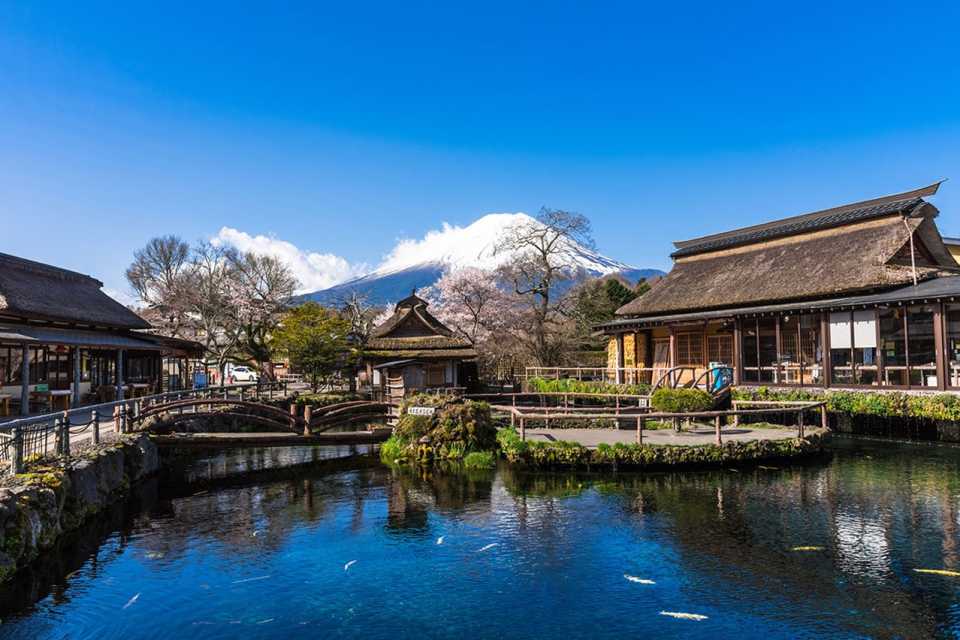
Among the natural treasures of Yamanashi, one cannot fail to mention the great Mount Fuji, the five lakes of Fuji and the Shosenkyo Valley. Here you can also visit the ruins of ancient monuments, such as the Takeda-jinja shrine and the Kai-Zenkoji temple – they have been preserved since the 16th century, when the Takeda clan ruled here. It is impossible not to mention another attraction of the prefecture – orchards on the hills, in which a variety of fruits and berries grow: peaches, strawberries, cherries, apples and blueberries. In the vicinity of the city of Katsunuma, where the most extensive vineyards in Japan are located, you can get acquainted with the history of Japanese winemaking, as well as taste different varieties of wine during a tour of large and small wineries (you can also try grapes here!)
Here you can play sports outdoors, admiring the beautiful landscapes, or get acquainted with the history and culture of Japan during excursions to local museums and art galleries. It is also home to many amusement theme parks. Yamanashi is not in vain considered one of the most attractive prefectures for tourists in Japan.
Yamanashi is one of the ancient centers of Japanese settlement
From the 8th century this area was known as Kai Province. In the Middle Ages, it was the patrimony of the Takeda military clan. During the Edo period (1600-1868), this area was directly controlled by the Tokugawa shogunate. This area received its modern name as a result of an administrative reform in 1871.
The administrative center of the prefecture is the city of Kofu (200 thousand inhabitants). From the sixteenth century developed as a castle town of the Takeda clan. During the Edo period, it was an important point on the Koshu kaido postal route.
The economic life of Yamanashi is concentrated in two areas – on the Kofu plateau (in the center of the prefecture) and Gunnai (in the south at the foot of Fuji). Yamanashi is a predominantly agricultural prefecture producing rice, fruits and vegetables. Yamanashi is also the birthplace and historical center of Japanese viticulture and winemaking. The industry is traditionally represented by textiles and glass production. In recent years, high-tech electronics, modern mechanical engineering, and the manufacture of precision instruments have been developing here.
The name of the prefecture – Yamanashi – is not very well known in Japan, although it can be called “five-star” in the literal and figurative sense of the word without much stretch. And first of all, because it has genuine pearls of Japanese nature. Yamanashi bisects the Japanese sacred Mount Fuji with Shizuoka: the border between these prefectures passes just through the peak of this extinct volcano, which has become a symbol of the Land of the Rising Sun. From the same Shizuoka divides Yamanashi and the most famous national park (natural reserve) Fuji-Hakone-Izu. Yamanashi is also home to the Chichibu-Tama and Southern Alps National Parks.
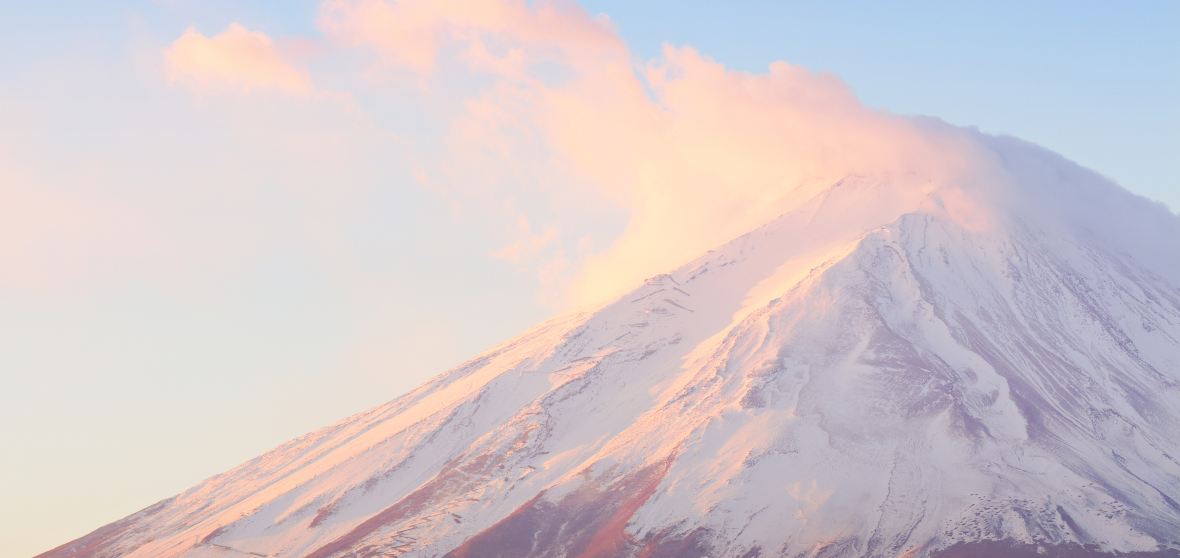
And the northern foot of Fuji, which is in full possession of Yamanashi, is decorated with a natural necklace of the five pearls of Japanese tourism – a chain of Fuji lakes (Fuji goko). If you move from east to west, these will be lakes Yamanaka, Kawaguchi, Sai, Shoji and Motosu. All of them are located at an altitude of 800-1000 meters above sea level and were formed at one time as a result of the gradual filling of dips in lava flows that flowed down the slopes during a volcanic eruption.
The largest lake is Yamanaka (the area is 9.5 sq. km, the length of the coast along the circumference is 14 km, the depth is 13 m). The smallest is Shoji (area 1 sq. km). The deepest and most transparent is Motosu (the area is 5 sq. km, the circumference is 15 km, the depth is 145 m, the bottom is visible at a depth of 17 m).
Motosu is the most mysterious of the five lakes: it does not freeze in winter and has a constant water temperature of plus 4 degrees. The Japanese consider it a sacred lake and arrange the “Lake Festival” here on August 3 with religious processions and fireworks.
Nevertheless, the Katsuyama village on Lake Kawaguchi (area 6 sq. Km, circumference – 20 km, depth – 21 m) is considered the tourist center of the Five Lakes of Fuji. If around other lakes there are only tourist campsites (bungalows and tents) and small private boarding houses, then there are tourist hotels in Katsuyama. There is a Fuji Museum in Katsuyama, and you can cross Lake Kawaguchi on a modern bridge.

